Note
Access to this page requires authorization. You can try signing in or changing directories.
Access to this page requires authorization. You can try changing directories.
Note
This connector is owned and provided by Databricks.
Summary
| Item | Description |
|---|---|
| Release State | General Availability |
| Products | Power BI (Semantic models) Power BI (Dataflows) Fabric (Dataflow Gen2) |
| Authentication Types Supported | Azure Active Directory Personal Access Token Username / Password |
Note
The Azure Databricks connector for Power BI now supports the Arrow Database Connectivity (ADBC) driver. This feature is available in preview. Learn more here.
Capabilities supported
- Import
- DirectQuery (Power BI semantic models)
Connect to Databricks (AWS, Azure or GCP) from Power Query Desktop
To connect to Databricks from Power Query Desktop, take the following steps:
In the Get Data experience, search for Databricks to shortlist the Databricks connector, Azure Databricks. Use the Azure Databricks connector for all Databricks SQL Warehouse data unless you've been instructed otherwise by your Databricks rep.
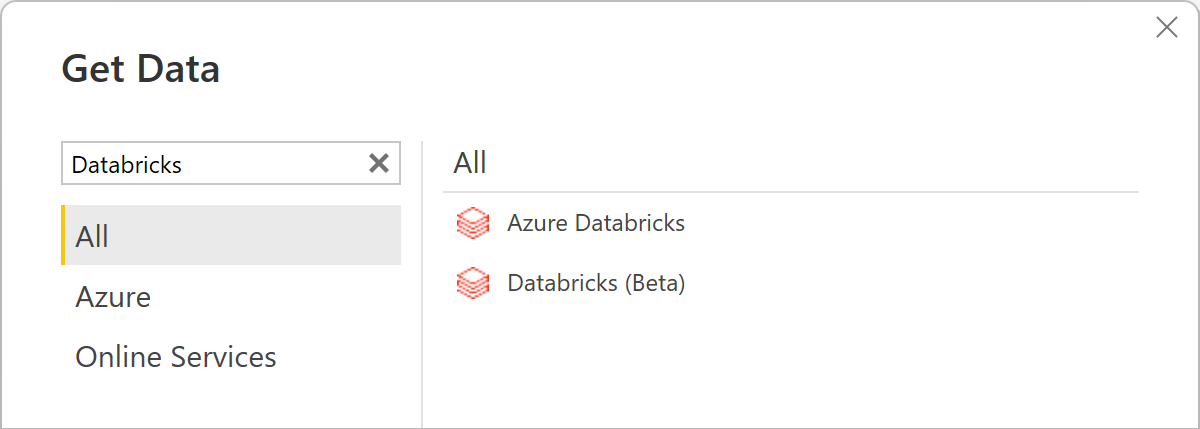
Provide the Server hostname and HTTP Path for your Databricks SQL Warehouse. Refer to Configure the Databricks ODBC and JDBC drivers for instructions to look up your "Server hostname" and "HTTP Path". Enter this information accordingly. You can optionally supply a default catalog and/or database under Advanced options. Select OK to continue.
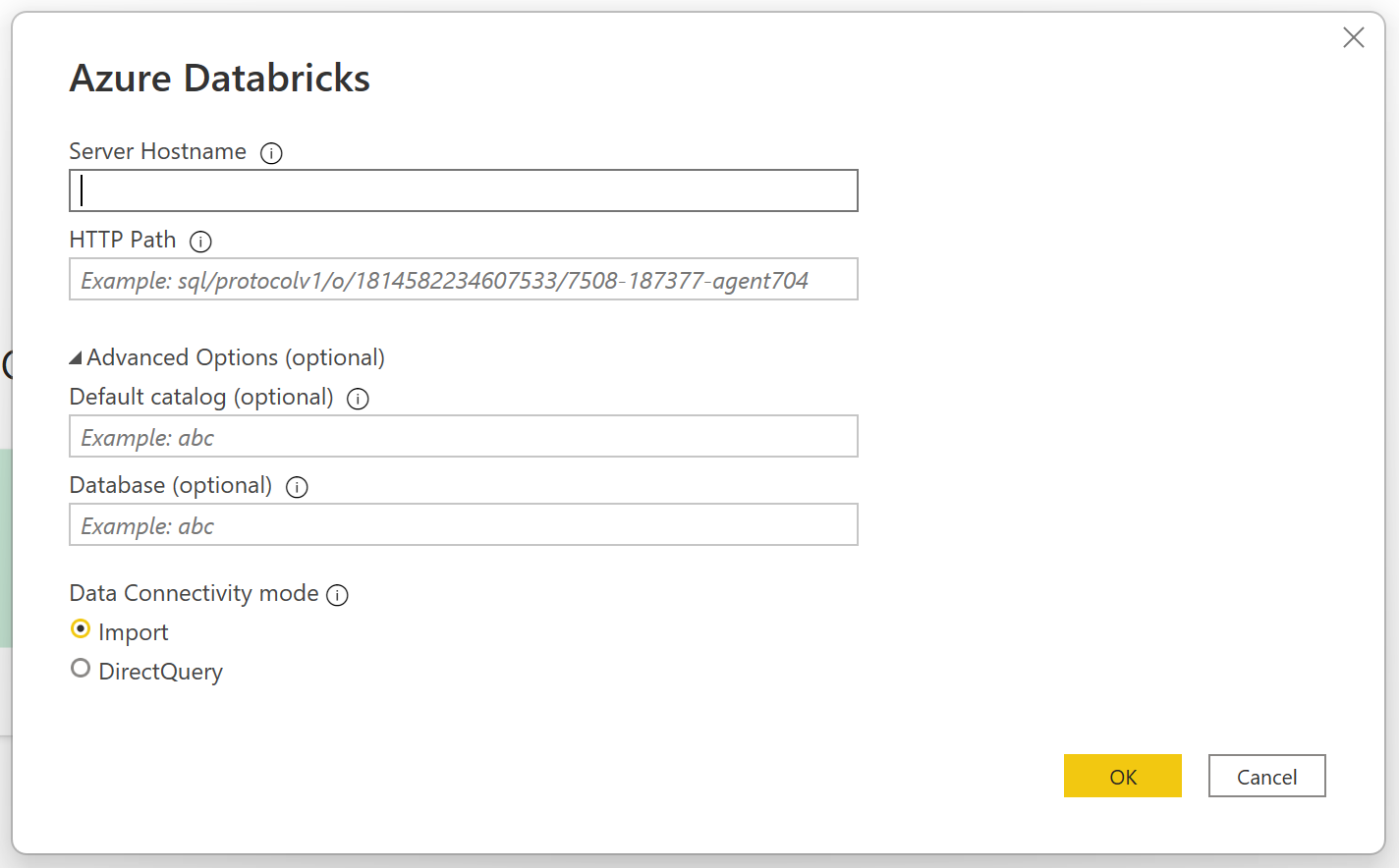
Provide your credentials to authenticate with your Databricks SQL Warehouse. There are three options for credentials:
Databricks Client Credentials. Refer to Databricks OAuth M2M for instructions on generating Databricks OAuth M2M Client Credentials.
Personal Access Token (useable for AWS, Azure or GCP). Refer to Personal access tokens for instructions on generating a Personal Access Token (PAT).
Azure Active Directory (useable only for Azure). Sign in to your organizational account using the browser popup.
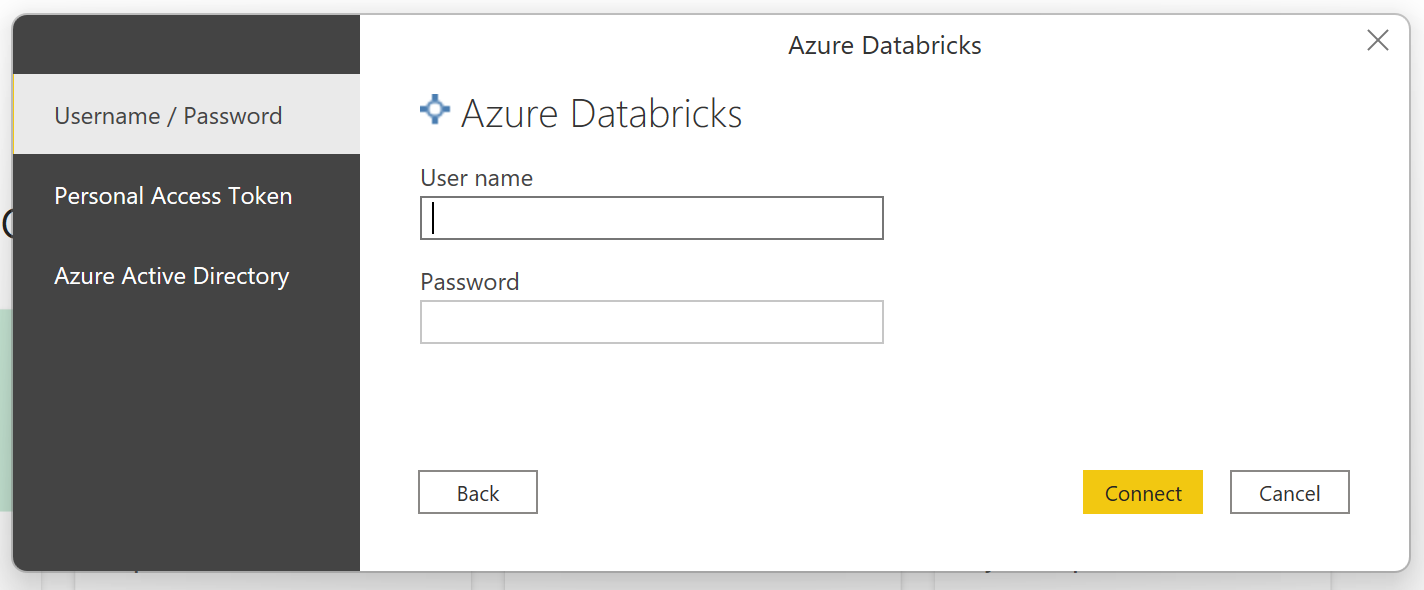
Note
Once you enter your credentials for a particular Databricks SQL Warehouse, Power BI Desktop caches and reuses those same credentials in subsequent connection attempts. You can modify those credentials by going to File > Options and settings > Data source settings. More information: Change the authentication method
Once you successfully connect, the Navigator shows the data available to you on the cluster. You can choose either Transform Data to transform the data using Power Query or Load to load the data in Power Query Desktop.
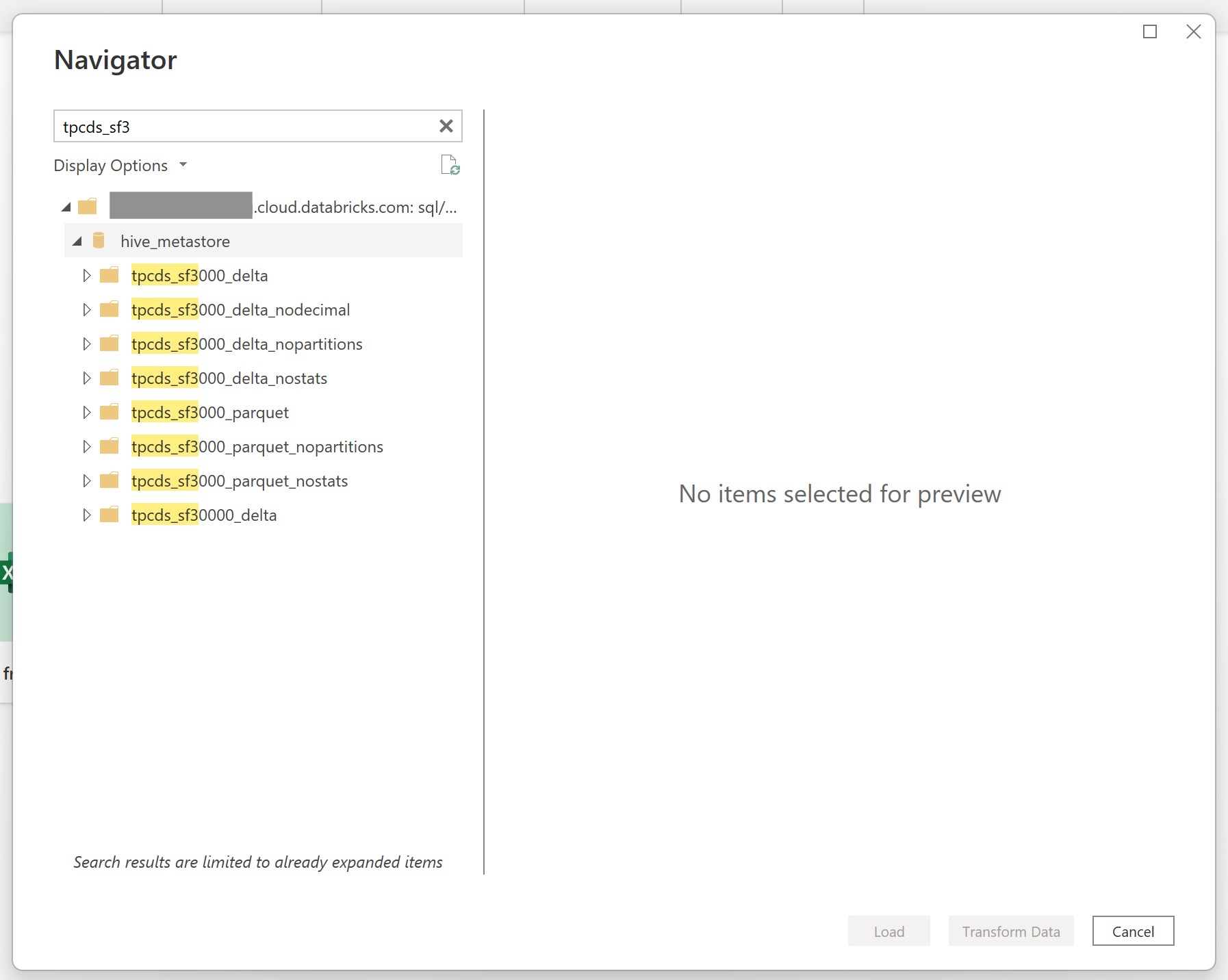
Connect to Databricks data from Power Query Online
To connect to Databricks from Power Query Online, take the following steps:
Select the Azure Databricks option in the get data experience. Different apps have different ways of getting to the Power Query Online get data experience. For more information about how to get to the Power Query Online get data experience from your app, go to Where to get data.
Shortlist the available Databricks connectors with the search box. Use the Azure Databricks connector for all Databricks SQL Warehouse data unless you've been instructed otherwise by your Databricks rep.
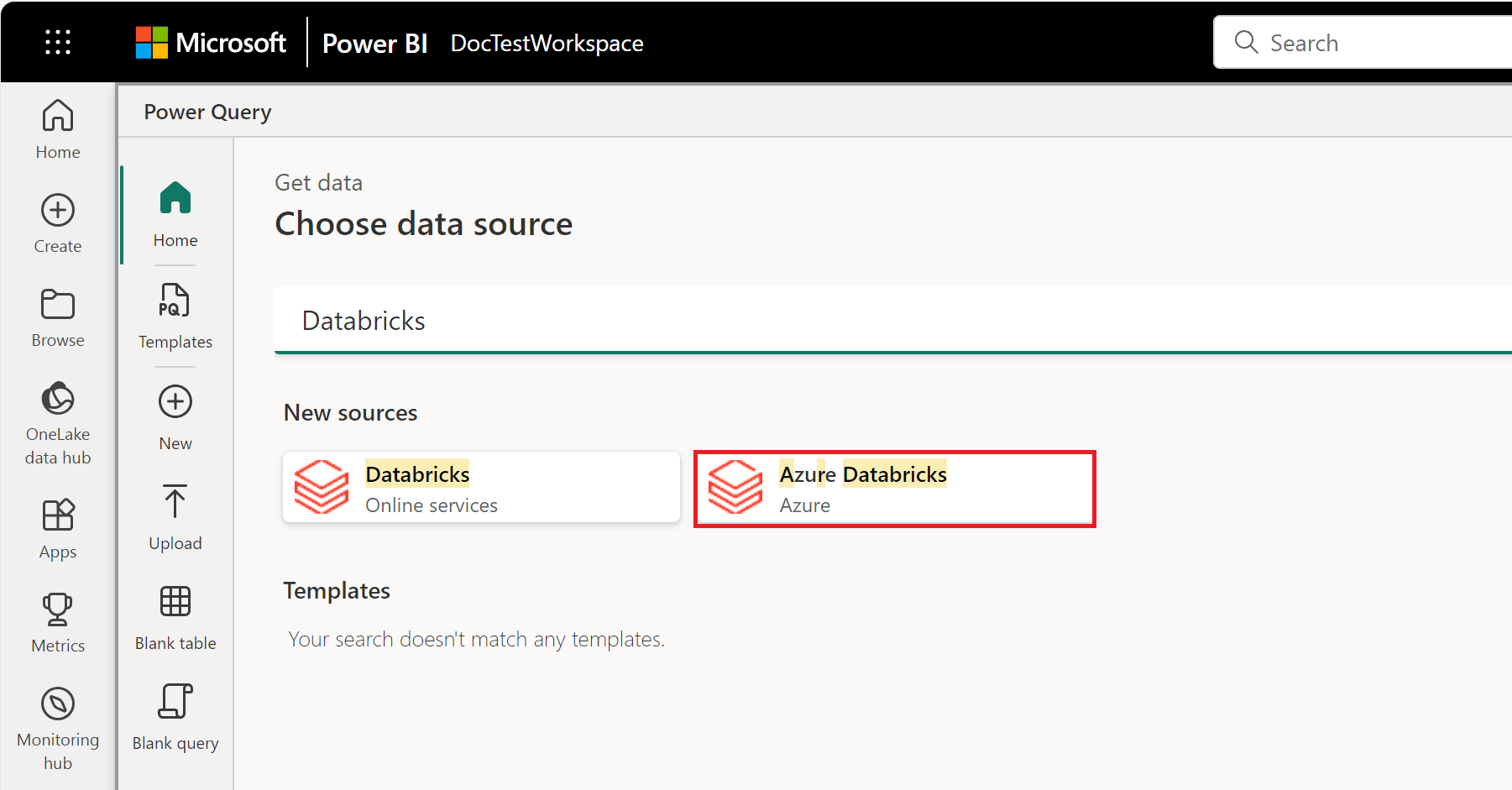
Enter the Server hostname and HTTP Path for your Databricks SQL Warehouse. Refer to Configure the Databricks ODBC and JDBC drivers for instructions to look up your "Server hostname" and "HTTP Path". You can optionally supply a default catalog and/or database under Advanced options.
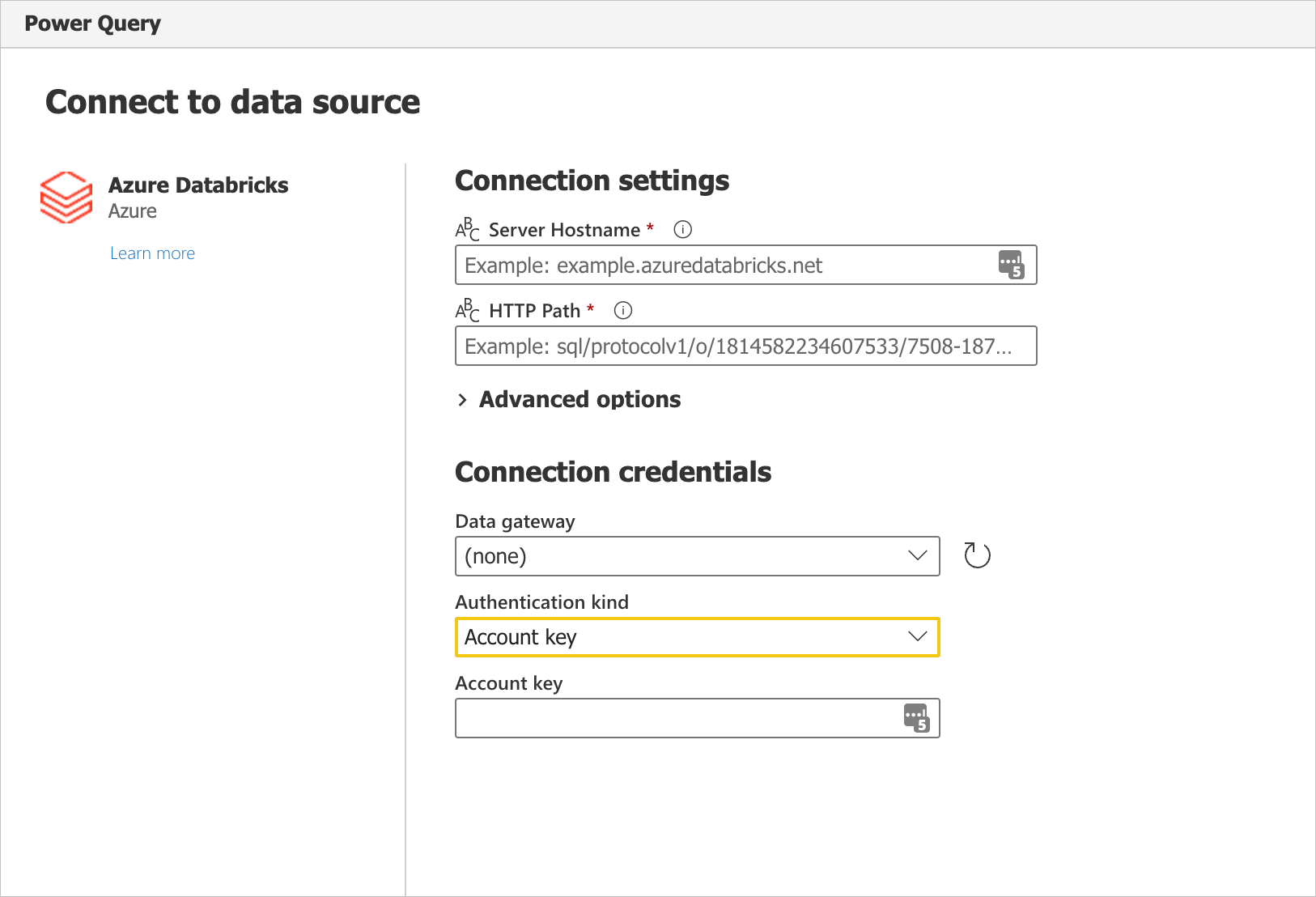
Provide your credentials to authenticate with your Databricks SQL Warehouse. There are three options for credentials:
- Username / Password (useable for AWS or GCP). This option isn't available if your organization/account uses 2FA/MFA.
- Account Key (useable for AWS, Azure or GCP). Refer to Personal access tokens for instructions on generating a Personal Access Token (PAT).
- Azure Active Directory (useable only for Azure). Sign in to your organizational account using the browser popup.
Once you successfully connect, the Navigator appears and displays the data available on the server. Select your data in the navigator. Then select Next to transform the data in Power Query.
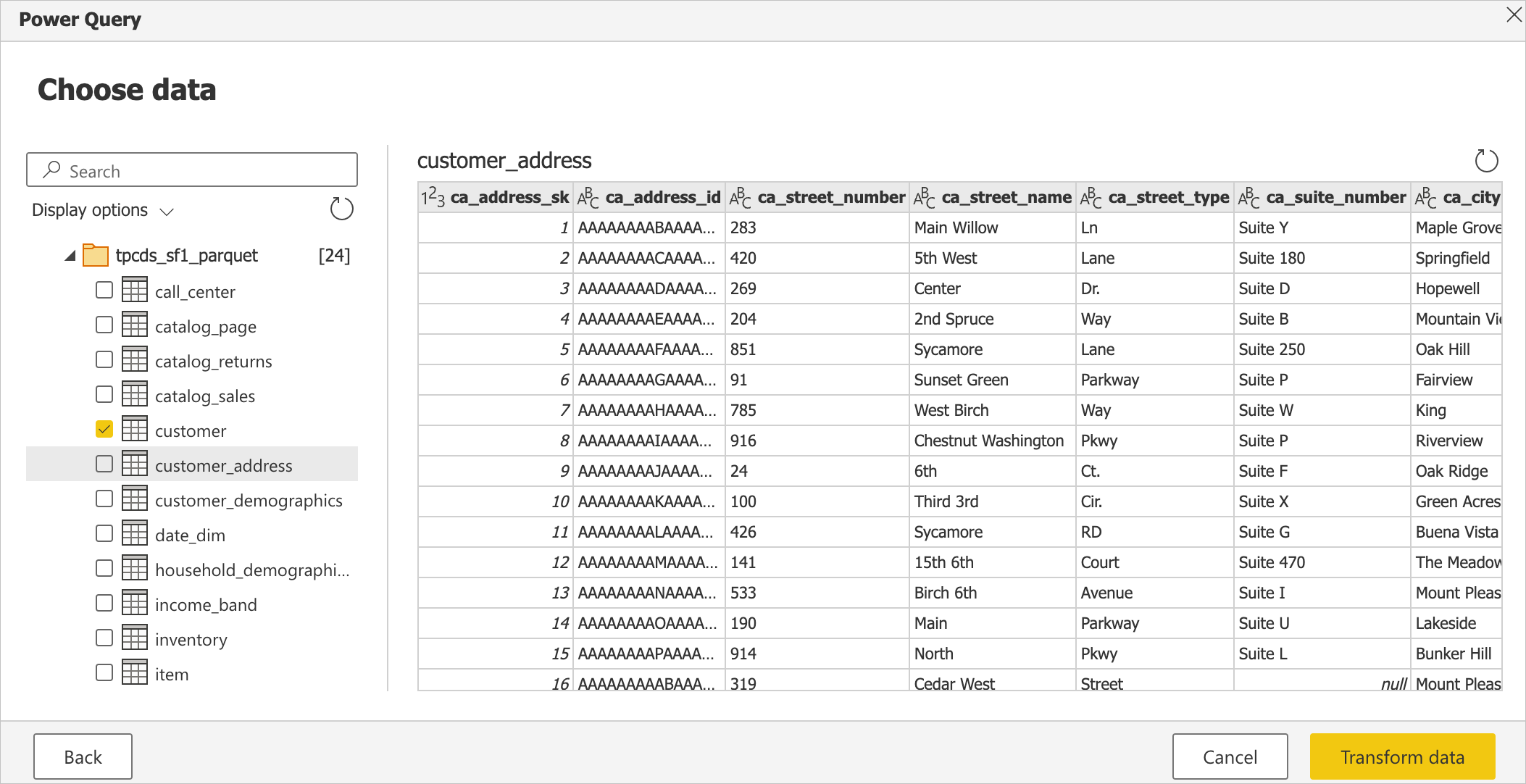
Arrow Database Connectivity driver connector implementation (Preview)
You can use the Arrow Database Connectivity (ADBC) driver for the Azure Databricks connector in Power BI. As we continue to enhance and add new capabilities to this connector, we recommend that you to upgrade to the latest version to try it out and submit product feedback.
To switch to the ADBC driver:
- Open your desired dashboard in Power BI.
- Select Transform Data.
- Select Advanced Editor in the Query option section.
- Specify
Implementation="2.0"for ADBC.let Source = Databricks.Catalogs("adb-<workspace-id>.<random-number>.azuredatabricks.net", "/sql/1.0/warehouses/<sql-warehouse-id>", [Catalog=null, Database=null, EnableAutomaticProxyDiscovery=null, Implementation="2.0"]), powerbi_Database = Source{[Name="powerbi",Kind="Database"]}[Data], default_Schema = powerbi_Database{[Name="default",Kind="Schema"]}[Data], dashboard_data_Table = default_Schema{[Name="dashboard_data",Kind="Table"]}[Data] in dashboard_data_Table
Limitations
- The Azure Databricks connector supports web proxy. However, automatic proxy settings defined in .pac files aren't supported.
- In the Azure Databricks connector, the
Databricks.Querydata source isn't supported in combination with Power BI semantic model's DirectQuery mode.